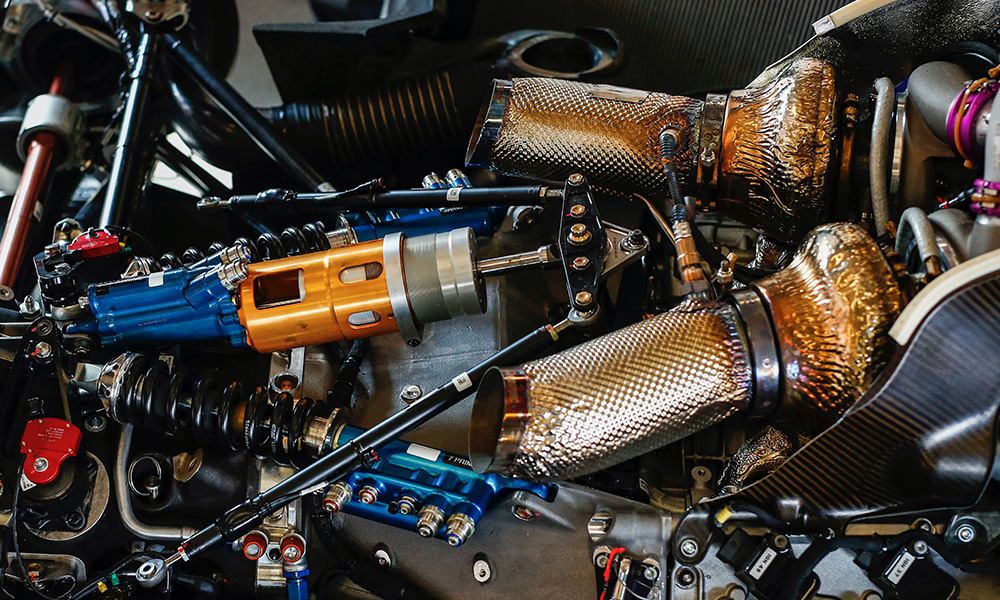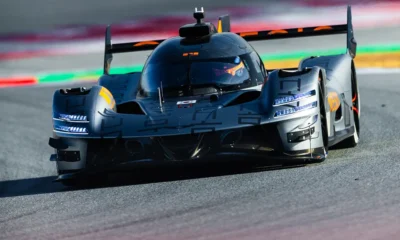
Photo: Juergen Tap/Porsche
Porsche could roll out with an updated crankshaft for its V8 twin-turbo engine used in the Porsche 963 mid-year according to Porsche LMDh factory director Urs Kuratle.
The German manufacturer, which debuted the LMDh car last year in the IMSA WeatherTech SportsCar Championship and FIA World Endurance Championship, has pursued updates to the car for the 2024 seasons.
However, Kuratle confirmed to reporters during a media call on Monday that its proposed new crankshaft is not currently on the updated Porsche 963 that will start the WeatherTech Championship season next week at Daytona.
“We are not running it,” Kuratle said. “It’s actually the last discussion point we have with IMSA and the ACO is whether we can introduce it… this season, [in] 2024.
“The answer is no: we are not [currently] running it. And when we are running it for the first time, we are not sure yet.
“As we all know, changes like crankshafts have a massive lead time that takes months to get these things all on the car.
“Before we have it on the car we have to have the first pieces. Then we also need to endurance test it.
“Definitely we will not run it at any race before Le Mans. If we introduce it in Le Mans or before Le Mans, we are not sure yet. We simply don’t know.”
Each LMDh and LMH manufacturer are allowed up to five so-called ‘EVO Jokers’ to be utilized during the five-year homologation period, although it’s unclear how many, if any, Porsche has taken up on its currently updated 963.
Kuratle did not go into specifics on the already approved re-homologations when asked by Sportscar365.
“It’s a number of points,” he explained. “There’s smaller points. There’s sometimes only different sensors or layouts of cables and things like this.
“They’re very, very small points.
“It will be nothing visual on the car. So nothing will be noticed on the outside shell of the car. The aerodynamics, all that thing, they look the same.
“There’s a number of details. Sometimes it’s a material change where a fitting used to be out of aluminum and due to reliability reasons we changed to steel or things like this.
“They are minor details like this. It’s a relatively small list on parts we’ve changed.”
The undisclosed updates ran on the two Porsche Penske Motorsport-entered GTP cars at last month’s IMSA-sanctioned test at Daytona International Speedway, per the regulations.
“In our case, because we do the Daytona race for IMSA, we approached IMSA/ACO quite early last year, in the summer, with a catalogue of all those points,” Kuratle added.
“We discussed this and it was an open, fair and a good discussion.
“I’m not saying we got everything through but that was all understandable and there were open and fair discussions.”
With all Porsche 963s needing to be updated to run in the same configuration, Kuratle admitted that the German manufacturer is in a more difficult position compared to other brands that only have two or three cars in active competition.
Between its four factory entries, two apiece in the WeatherTech Championship and WEC, along with its customer cars, there will be at least nine 963s actively competing between the two series this year.
“If we introduce something new, they have to be introduced from that point on on all the cars,” Kuratle said.
“Quite soon, if you take bigger parts, you get yourself into a situation where you fight supply chain issues to have all the cars [ready].
“And also, sometimes, for example, if it’s something in an engine or an engine, people have to sometimes send their engines back to Weissach to install it.
“There’s a lot of questions to answer to the customers. We sold the customers a car and they expect that car to be performing and working at the best level.
“If you have to re-homologate, that’s not necessarily something the customers want to pay for, actually. That’s also discussions we have internally.
“It’s definitely a disadvantage if you have more cars in the field but still the approach from Porsche AG to provide customer cars on that level, that’s still the main goal and main target.
“We expected those issues.”
























